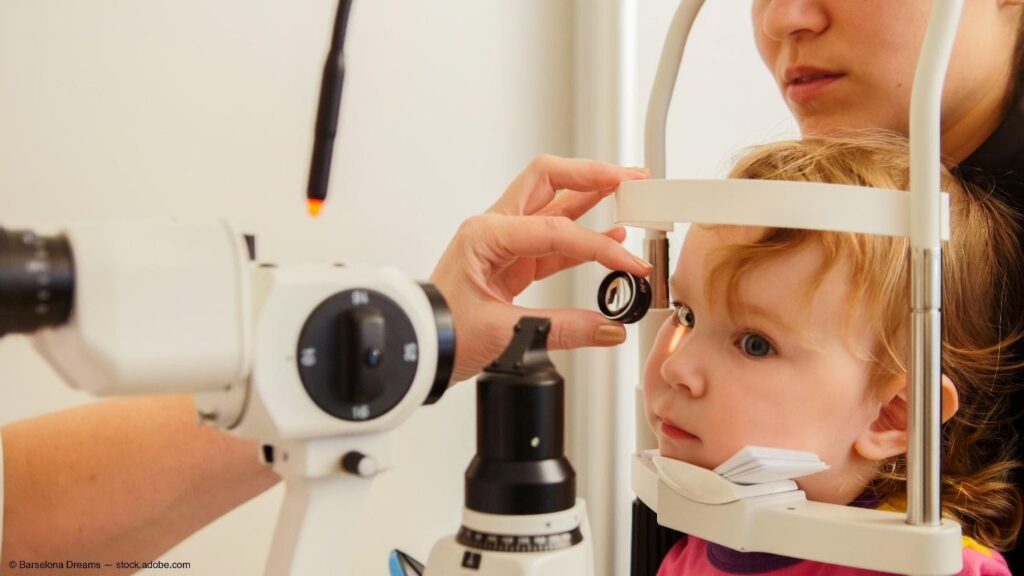In the olden days, people believed that cataracts could only be seen in older adults. In fact, some believe that cataract is a sign of old age. Could this be through? Of course, No! The fact remains that some children are born with a cataract. Although cataracts in babies and children result from the lens not being informed the way it should be during pregnancy. Remember, one of the types of cataracts is congenital cataracts. Congenital cataracts are hereditary. They are cataracts that one is born with. Also, this cataract forms when one is still a child. Congenital cataracts are sometimes linked to one’s genes and some other illness that your mother had during pregnancy. When these cataracts are small or outside the middle of the lens, they may not need any treatment. But once the child is born with this cataract blocking their vision, there’s a need for cataract surgery. The baby will need cataract surgery because if care is not taken, this cataract can stop the baby’s eye from learning to see.
However, research has shown that chromosomal problems can cause congenital cataracts. Chromosomal issues occur when there’s an extra chromosome, while others occur when a section of a chromosome is deleted or duplicated. Examples of chromosomal problems are Down syndrome, trisomy 18, and 13. Click here to read more about Cataracts eye surgery in Sydney.

We have seen children undergoing cataract surgery right from the time of their birth. Furthermore, cataracts can be in a child during pregnancy, and they can also occur after childbirth. Cataracts that are caused after delivery are called acquired. Then what are the causes of acquire?
Acquire can be caused by eye swelling, subconjunctival hemorrhages, traumatic iritis, and corneal abrasion. Other causes of cataracts after childbirth are diabetes, eye problems, radiation treatment, and steroids. And at times, after some series of tests have been done, the doctor may not know why a child gets cataracts. At times, they go for cataract surgery once they notice a cataract in a baby.
How to find out if a baby has a cataract

It is impossible to see the cataract in babies because they can’t express how they feel. It is always hard for children to explain vision problems to their parents not to talk about cataract surgery. They might not even know that there is something wrong with the way they see things. Unlike the adults, they will tell you the exact way they feel, giving the doctor some clues. It is straightforward for the doctor to quickly inform the adult that they will need to undergo cataract surgery. What are we saying in essence? We are trying to show you how hard it might be for one to know if a child will be going for cataract surgery or not. Of course, it is hard but not impossible.
Therefore, what you may likely see in children as a sign of cataract is a white or gray spot inside the pupil. However, another way to find out if your child has a cataract is to ensure that your child’s vision is checked regularly. Remember what we said earlier that they are too small to tell you how they feel audibly.
It is expedient for you to know that a baby of four months old should be able to look around and track things with their eyes. Once you notice that your baby can’t do that, they might need to undergo cataract surgery. Also, if you see that your child’s eyes are not in alignment, which means they are not looking in the same direction, there’s a problem.
One thing you should note as a parent is that the earlier you find out your child has cataracts, the better their sightedness will be in the long term.
The first step you must take is to do a vision screening for them at childbirth to know the state of their eyes. At newborns, the doctor will check their eyes for cataracts and other eye problems. The work doesn’t end there. Ensure that they visit an eye doctor to have a vision test throughout their infancy and childhood.
How can cataracts be treated in babies and children?
The only way to solve this problem is to go for cataract surgery. What is cataract surgery? Cataract surgery referred to the process of eradicating the natural lens and replacing it with an artificial lens. An ophthalmologist performs cataract surgery. However, cataracts in children may not be removed if the cataract is small and hasn’t grown to the extent of affecting their vision. But the moment it started to affect their eyesight, it should be treated as soon as possible.
Remember, we said the only remedy to cataracts is surgery. Before the surgery, the doctor will give your child anesthesia. The essence of giving them anesthesia is to make them feel relaxed and sleep during the surgery process. The doctor will use some tools to break up the lens and remove it through a minimal cut. Then, the doctor will replace the natural lens with an artificial one.
But in a situation whereby a child has a cataract in both eyes, or one eye is worse than the other. The child may develop what we call amblyopia. The doctor would have to treat the eyes one after the other.

Conclusion
With the above-listed information, we’ve seen that cataract is possible in both old, young, children, and even babies. We mentioned some factors and some causes of cataracts in children and babies. Not only that, but we also proceed to know how cataracts can be treated in babies. Therefore, as a parent, it is expedient for you to know that taking your children for regular eye checkup is what you shouldn’t joke about.



